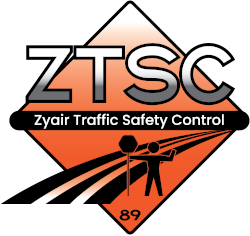Construction sites are inherently hazardous environments, with heavy machinery, uneven surfaces, and constant activity creating a perfect storm for accidents. One critical factor that often goes unnoticed is the role of traffic control in maintaining safety on and around these sites. Effective traffic control isn’t just about directing vehicles; it’s about safeguarding the lives of workers, pedestrians, and drivers. This article delves into how effective traffic control improves safety at construction sites and why it’s a cornerstone of modern construction safety protocols.
Understanding the Importance of Traffic Control in Construction
Traffic control refers to the management of vehicle and pedestrian movement in and around construction zones. It involves a range of activities, from the placement of signs and barriers to the coordination of flaggers and traffic lights. The primary goal is to minimize the risk of accidents by controlling the flow of traffic, ensuring that vehicles, workers, and pedestrians can coexist safely.
In construction zones, the risk of accidents is amplified by the proximity of moving vehicles to ongoing work. Without proper traffic control measures, the likelihood of collisions, pedestrian injuries, and even fatalities increases significantly. This makes traffic control not just a regulatory requirement but a moral imperative for construction companies.
Key Elements of Effective Traffic Control
Effective traffic control at construction sites involves several key elements, each contributing to overall safety:
- Clear Signage: Proper signage is the backbone of traffic control. Signs should be strategically placed to warn drivers and pedestrians of upcoming construction zones, changes in traffic patterns, and potential hazards. Clear, visible, and easy-to-understand signs reduce confusion and help prevent accidents.
- Barriers and Barricades: Physical barriers and barricades are essential for separating construction areas from traffic lanes. These barriers protect workers from vehicles and guide drivers away from dangerous areas. The use of cones, barrels, and temporary concrete barriers ensures a clear demarcation between work zones and traffic.
- Flaggers and Traffic Controllers: In situations where traffic patterns are complex or where the construction site is particularly hazardous, trained flaggers and traffic controllers play a crucial role. These professionals manage the flow of traffic in real-time, ensuring that vehicles move safely through the area while protecting workers.
- Traffic Signals and Lights: Temporary traffic signals and lights are often used in larger construction projects to regulate the flow of vehicles. These systems are especially useful in managing traffic at intersections or on busy roads where construction is taking place.
- Speed Reduction Measures: Lowering speed limits in construction zones is a common traffic control measure. Reduced speed limits give drivers more time to react to unexpected changes, such as the appearance of a worker or a sudden lane shift. Speed bumps and rumble strips can also be used to enforce slower speeds.
The Impact of Traffic Control on Safety
The implementation of effective traffic control measures has a direct impact on safety at construction sites. Here are some of the ways in which it contributes to a safer environment:
- Prevention of Vehicle-Related Accidents: Proper traffic control minimizes the risk of collisions between vehicles and construction workers. By clearly delineating work zones and guiding traffic away from hazardous areas, these measures help prevent accidents that could result in severe injuries or fatalities.
- Enhanced Worker Protection: Construction workers often operate in close proximity to moving vehicles, making them vulnerable to accidents. Effective traffic control creates a safer working environment by ensuring that vehicles are kept at a safe distance from the work area. This allows workers to focus on their tasks without the constant threat of being struck by a vehicle.
- Pedestrian Safety: In urban construction projects, pedestrian safety is a major concern. Traffic control measures such as crosswalks, pedestrian signals, and barriers help guide pedestrians safely around construction zones, reducing the risk of accidents.
- Reduced Traffic Congestion: Traffic control not only improves safety but also helps to reduce congestion around construction sites. By efficiently managing the flow of vehicles, these measures prevent traffic jams and reduce the likelihood of accidents caused by frustrated or distracted drivers.
- Compliance with Regulations: Adhering to traffic control regulations is not only a legal requirement but also a best practice for ensuring safety. Construction companies that implement effective traffic control measures are more likely to comply with OSHA standards and other regulatory guidelines, avoiding fines and legal issues.
Effective traffic control is a vital component of construction site safety. By managing the movement of vehicles and pedestrians around construction zones, it helps prevent accidents, protects workers, and ensures the smooth flow of traffic. For construction companies, investing in robust traffic control measures is not just about compliance; it’s about prioritizing the safety of everyone involved. As construction projects continue to grow in scale and complexity, the importance of traffic control in maintaining a safe working environment cannot be overstated.


